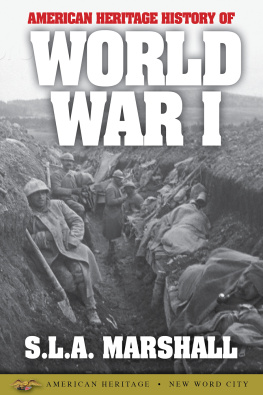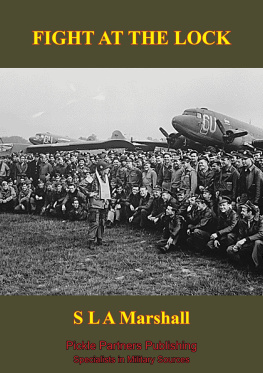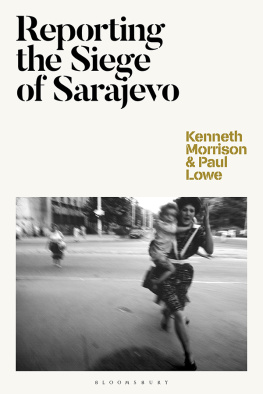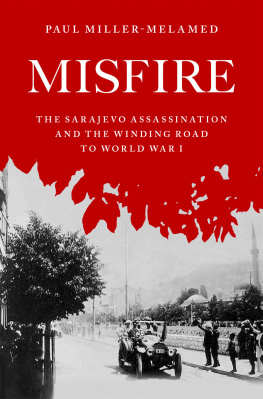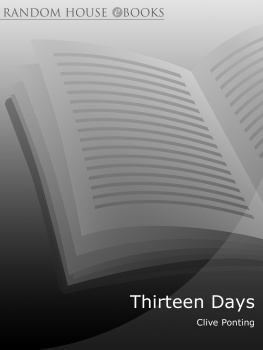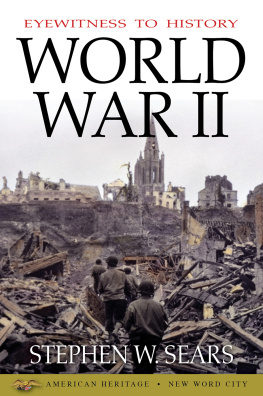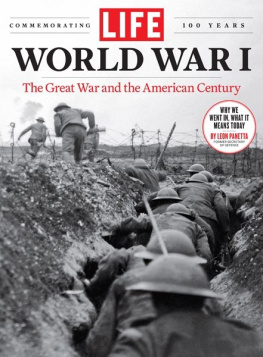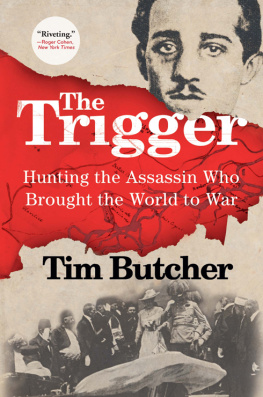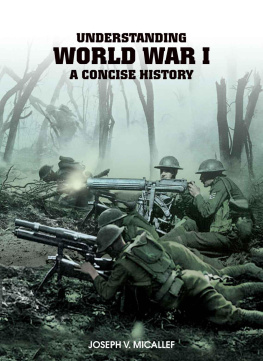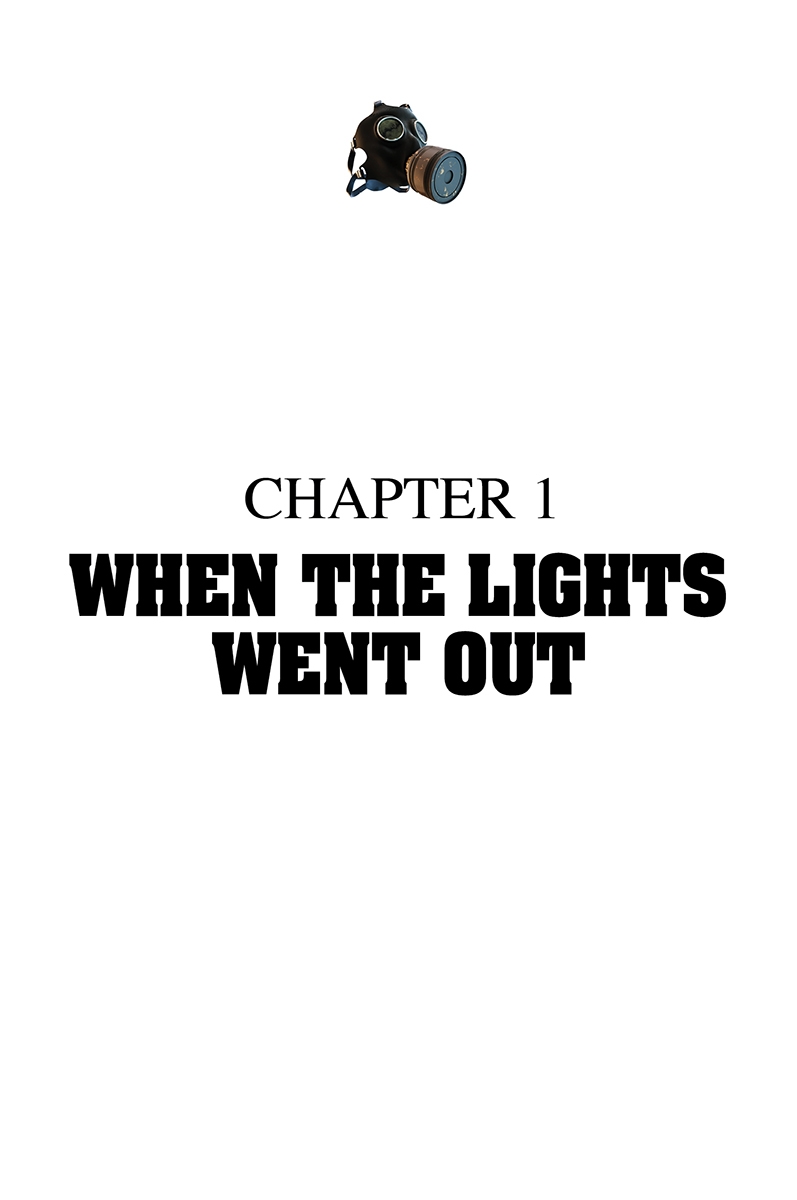In the Bosnian town of Sarajevo on the morning of June 28, 1914, a chauffeur misunderstood his instructions, made the wrong turn, tried too late to correct his blunder, and in so doing, delivered his passengers to a point where a waiting assassin did not have to take aim to gun them down.
Two rounds from one pistol and the world rocked. The crime was the small stone that loosened brings the avalanche. There followed four years of universal violence. Millions met untimely death. Many mistaken instructions, wrong turns, and belated tries to redress errors entered into the making of World War I . The ambushing of an Austrian couple was the precipitating incident.
This book is about the crime of fifty years ago and what came from it. It tells why the killers killed and how it happened that the tragedy did not end there. The players and the performance at Sarajevo are the beginning of the tale to be unfolded. Intrigue, violence, and death color the scene. They also mark the larger story to the finish. But for the murder at Sarajevo, there might never have been a war. People can speculate to the contrary; they cannot know.
So to begin. Seven young Serbian nationalists formed the murder mob. They were a carpenter, a printer, teacher, and four students. Five were under twenty; the elder of the other two was twenty-seven. This undertaking was their first and only crime together. Their arrangements were so haphazard, their skill with weapons so minimal, that the plot should have failed. The men armed themselves with Belgian pistols, crude hand bombs, and cyanide capsules, the last for suicide. Under a burning sun in midmorning, they parted, walked through flag-bedecked streets and holiday crowds, and took up separate positions along a street called the Appel Quay, flanking the Miljaka River. It was a gala morning, for Sarajevo was celebrating the Feast of Saint Vitus , the symbol of Serbian resurrection and victory over the Turks. To the seven young conspirators, it was the right day for a good deed.
So they awaited their target, the Archduke Franz Ferdinand . Their motives in seeking the death of the heir apparent of Austria-Hungary were as bizarre, contradictory, and rooted in personal emotion as his reasons for affording them the opportunity. The archduke was not personally an oppressor of his people, the southern Slavs, and had tried to be their friend. The Serbs and Croats in Austrias southern provinces of Bosnia and Herzegovina were not abused or maltreated under the empire. By the standards of the day, they lived well.
The seven assassins were not bent on bringing down Austria-Hungarys Dual Monarchy, which, with its many faults, still afforded Central Europe a better life than its various peoples had ever known separately. They went gunning for the archduke because they wanted a bigger place in the sun for Serbia, and he kept the rendezvous because he wanted a bigger place in the sun for his wife.
June 28 was the archdukes fourteenth wedding anniversary. His wife had been Countess Sophie Chotek , child of a noble, obscure Czech family, lady in waiting to the archdukes cousin, Isabella. Old Emperor Franz Joseph was so offended by his nephews choice of a mate beneath his station that the two wrangled about the marriage for a year. When at last the emperor consented, Franz Ferdinand got only half of what he wanted. He was compelled to renounce the rights of succession and rank for his children, taking Sophie as a morganatic wife. The marriage proved to be a great love affair, blessed by three children, but the humiliation and bitterness lasted, more so because the court in Vienna snubbed Sophie and did what it could to slight her. She could not ride in the royal carriage with her husband or sit in the royal box at the theater. At court balls, where he led the procession, she was placed behind the last princess of royal blood.
Gradually, the old emperor softened toward Sophie, but Franz Ferdinand could never forgive the court; such sentiment was not in him. Swollen with pride, dangerously thin-skinned, a misanthrope, a religious bigot, and a miser, he was the loneliest man in Vienna, loved only by his wife and children. There was no moderation in him; his humors and rages were those of a spoiled child. No worthwhile subordinate could abide him for long. His career was littered with broken friendships, ruined by his temper and spitefulness. Not attracted to small vices, he showed his love of excess in more lordly ways. By the age of thirty-three, he had shot 1,000 stags; by forty-six, he had bagged 5,000. In Sarajevo, at the age of fifty-one, the hunter became the hunted.
Franz Ferdinand traveled to Sarajevo because of his love for Sophie and his desire that she should have a special honor on her wedding anniversary. Two corps of the Austrian Army, regularly stationed in Bosnia, were holding their annual maneuvers next to the border with Serbia, Austrias tiny neighbor. The archduke was inspector general of the Army, and it was his duty to go, but he prearranged the meeting with Sophie in Sarajevo because, in that company on that day, she would have to be treated with royal honors.
There were political overtones to the visit transcending these personal considerations. Prewar Austria-Hungary was a loose linking of two empires run by strong races, the Germans and the Magyars . There were large, submerged Slav minorities in both countries, the Czechs and Slovaks in the north, the Serbs and Croats in the south. The Hapsburgs , the feudal German overlords of this odd amalgam of mutually distrustful peoples, had their greatest difficulties with the largest and proudest of the blocs, the Hungarians. They, therefore, inclined to favor certain of their Slav subjects toward offsetting the power and influence of their strongest vassal. Franz Ferdinand was an extreme champion of this policy. Further, he nursed the false conceit that he was viewed with extra grace by the southern Slavs because he had married a northern Slav.
The people of Serbia saw Franz Ferdinand as a threat to all they coveted, simply because he advocated Trialism , or triple reorganization of the empire, in place of the existing Dualism . He was credited with believing that giving the Slavs an equal voice with Germans and Magyars was the way to regenerate the empire. Right or wrong, that suspicion in the Serbian mind doomed him at the Serbian hand. Should he rule and have his way, there could never rise a Greater Serbia . So Serbian nationalists cast him as the blackest of villains.
The provinces of Bosnia and Herzegovina were at the core of this scheming and striving. Although their populations were mainly Serb and Croat, Vienna had administered them since 1878, when the Turks had been expelled. But the two provinces had remained Turkish until 1908, when they were annexed to the Dual Monarchy. While the Great Powers took this highhanded act calmly, it outraged the Serbians. The southern provinces became a hotbed of subversion, and anti-Hapsburg propaganda flowed out of Belgrade, Serbias capital. Vienna kept looking for ways to soothe and placate its southern subjects. That was one of the objectives when the archduke and his wife went riding in Sarajevo on June 28.
A cleaner pack of assassins than the seven young men staked out on their route could hardly be imagined. Only one had a police record - for striking his teacher. All were temperate; several had never touched liquor. There was not a gambler among them, and all were free of personal debts. They had something else in common: All were ill with tuberculosis. Fever colors a persons view, and in their case, it probably made them more willing to die early, and as they thought, heroically.
There were four cars in the procession that rolled through the unprotected streets. Franz Ferdinand and Sophie rode in the second car. Although there were thousands of troops in the vicinity available to secure the route, Sarajevo, by the archdukes order, had been put off limits to them for one day.

